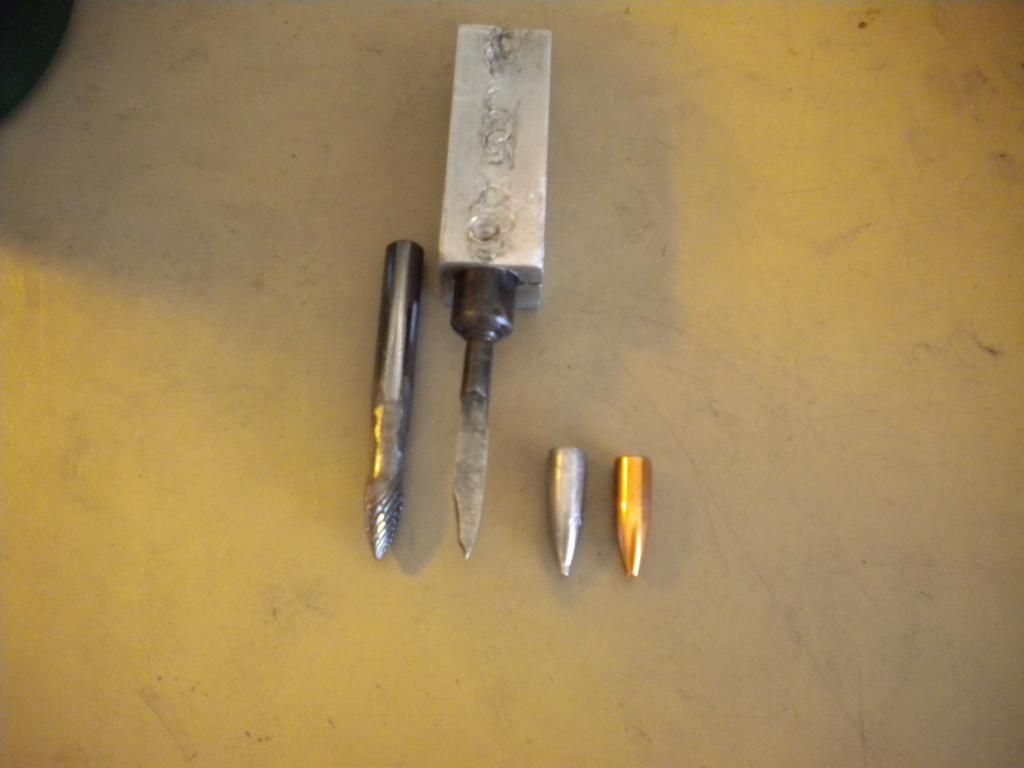I'm looking at making some die reamers with various profiles. Some people free-form a curve with files but that isn't reproducible. Others have built/bought a ogive/radius cutting fixture for their lathe but that takes time and money.
What I am looking at is using the swiveling compound rest as the ogive cutter. My cheap 9x20 import lathe has a one piece swivel base that I took apart and chucked the swivel pin in the lathe. Then using the tailstock drill I drilled a hole in the top of the piece that is concentric with the swivel axis. By using pointed pins I can align the chuck axis to intersect the swivel axis. Then using the crossfeed I can set the ogive radius offset. I can then set the bit and set a stop block on the compound rest so it stops rotating when the swivel to bit point line is perpendicular to the chuck axis. Using the longitudinal feed and swiveling the compound rest I can then cut a precise ogive.
It works well on my test wood dowel and aluminum pin but I have to make a better bit before I try steel. Has anybody here tried this before to cut a ogive on a reamer? I worry that it may not be rigid enough for cutting steel.

|
   
   
|


|






 Reply With Quote
Reply With Quote









